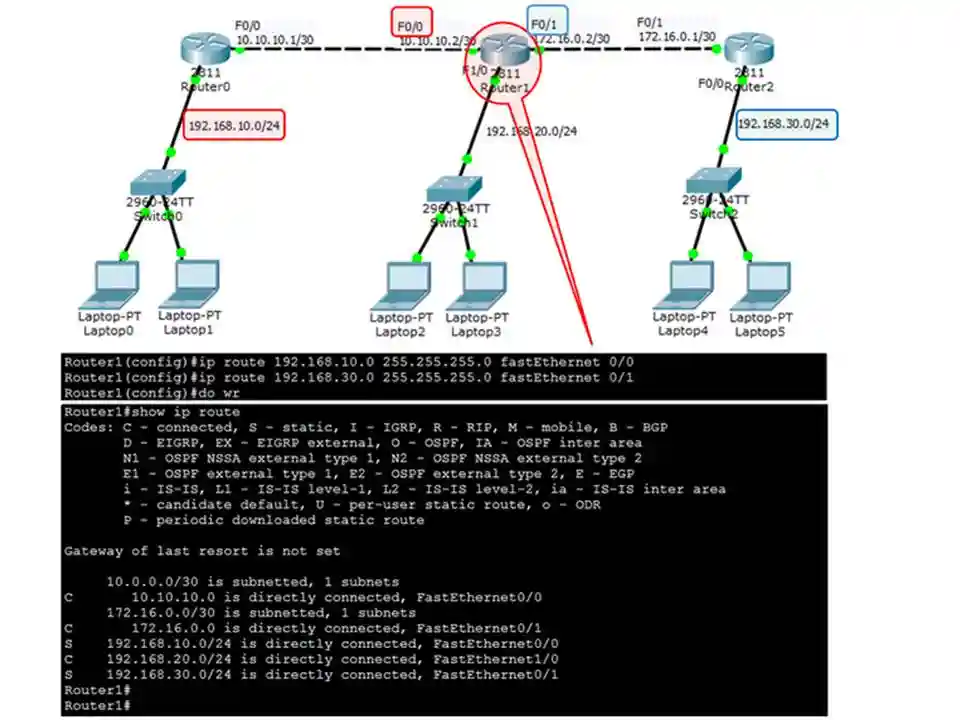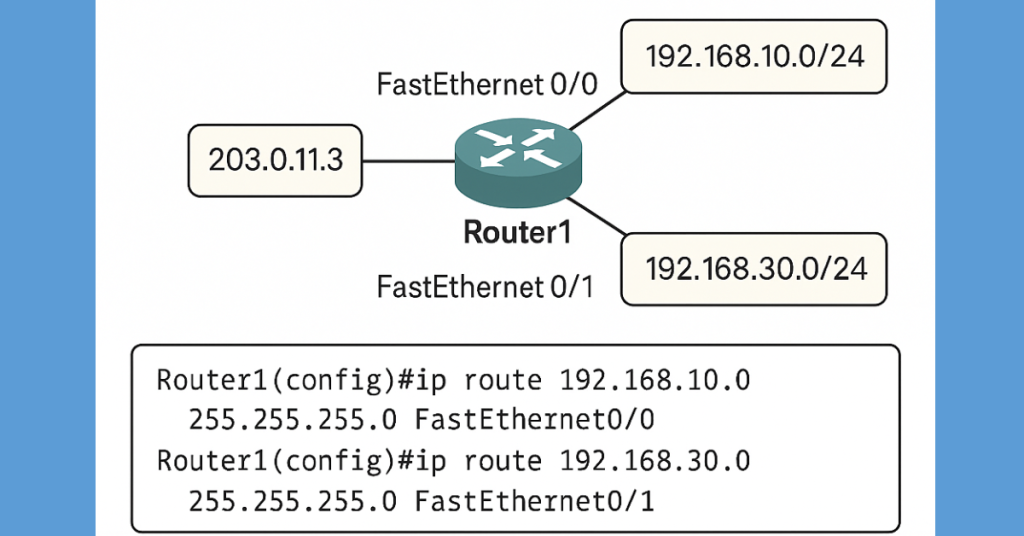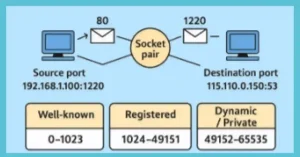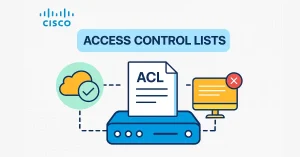Another way to configure a static route is to use the exit interface to specify the next-hop address. Before the CEF, this method was used to avoid the recursive lookup problem. But now the CEF resolves the recursive lookup problem. In Figure 1, the same topology that we already discussed in the previous lesson is shown. In this lesson, we should configure directly connected static routes on Router1 using exit interfaces. So using the IP route command, we have configured a static route using the exit interface for network 192.168.10.0/24 and network 192.168.30.0/24. You can see the full command in the second part of the figure below.
The routing table for Router1 is shown in the third part of the figure below. When someone sends a packet to the 192.168.10.0/24 network, Router1 looks for a match in the routing table and finds that it can forward the packet out of its Fast Ethernet 0/0 interface. The process required no further lookups. So, now you can compare the routing table using an IP address of the next-hop and the routing table using an exit interface of the router.

The routing table with a directly connected static route with an exit interface resolves the exit interface in a single search, instead of two searches. Therefore, it resolves the recursive routing problem without using CEF.
The routing table entry indicates “directly connected”, but the administrative distance of the static route is still 1. Only a directly connected interface can have an administrative distance of 0.
For point-to-point routers, we can use static routes that point to the exit interface or to the next-hop address. But the use of static routes using an exit interface on point-to-point networks is very common, which makes the CEF mechanism unnecessary.
For multipoint/broadcast interfaces, it is more appropriate to use static routes that point to a next-hop address. The following is the video to configure a static route using a directly connected static route.
Conclusion – Directly Connected Static Routes
Mastering directly connected static routes offers network professionals a powerful tool to enhance routing efficiency, eliminate recursive lookups, and maintain precise control over traffic paths. By leveraging the ‘ip route’ command with exit interfaces, as demonstrated in the Router1 configuration, administrators can optimize packet forwarding, especially in point-to-point networks, while simplifying troubleshooting and reducing overhead. While modern advancements like Cisco Express Forwarding have mitigated some historical challenges, the strategic use of these routes remains invaluable for small-scale or specific topologies. With a clear understanding of their advantages, configuration steps, and differences from truly connected interfaces, you can design robust, reliable networks tailored to your needs.





